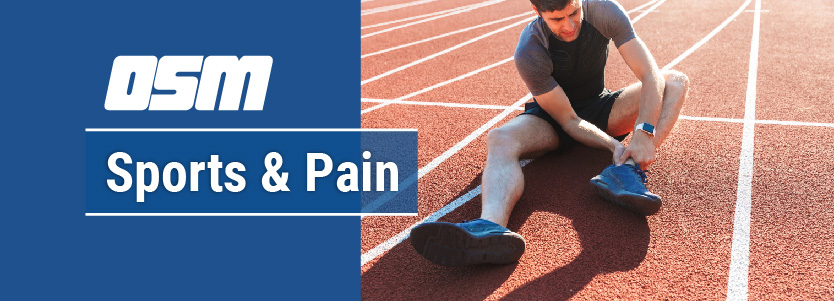Article featured on WebMDElite athletes walk a thin line. Do they compete through their pain and possibly cause more harm? Their drive often compels them to push through injuries when rest may be the wiser choice. But some strategies and treatments may help.Consulting a Multidisciplinary Medical TeamInput from sports medicine professionals is important in knowing safe activity levels and in making modifications when you’re hurt. They may include:
- Orthopedists. They can diagnose musculoskeletal injuries, provide treatment plans, and advise about activities that might worsen your condition.
- Physical therapists. They make tailored rehab and exercise programs to maintain your strength and mobility without overstressing your injury. They use things like massage, ultrasound, and electrical stimulation to promote healing.
- Athletic trainers. They can provide on-field acute injury management, like taping, bracing, and padding injuries. They make ongoing assessments of your symptoms during training and competition.
- Sports psychologists. These mental health experts help you cope mentally and emotionally with injury setbacks. They can also teach you ways to overcome any fear of reinjury or lost motivation.
This team can optimize your treatment and monitor your progress to catch any setbacks before your small pains become severe injuries.Pain and Inflammation ManagementControlling your swelling and pain helps you remain active when you’re injured. Treatment options include:
- RICE. Rest, ice, compression, and elevation can reduce your inflammation in the first 48 hours after you’re hurt.
- Medications. Nonsteroidal anti-inflammatory drugs (NSAIDs), muscle relaxers, and analgesics can relieve your pain and allow movement. But they should be used cautiously to avoid masking important symptoms.
- Cold therapy. Ice baths, cryotherapy chambers, and cold packs constrict your blood vessels and limit your swelling and inflammation.
- Heat therapy. Heating pads, ultrasound, and warm whirlpools increase your blood flow and reduce your muscle spasms and stiffness.
- Physiological techniques. Massage, acupuncture, and transcutaneous electrical nerve stimulation (TENS) can provide natural pain relief.
Gradual Return to Activity
For musculoskeletal injuries, a gradual return to exercise is key. This involves:
- Range-of-motion exercises to maintain your mobility and prevent scar tissue from forming.
- Low-impact activities like swimming, cycling, or anti-gravity treadmills to build endurance.
- Slowly increasing the duration and intensity of training to test your tolerance and avoid overexertion.
- Sport-specific drills to regain movement patterns before you resume full practices or competition.
- Listening carefully to your body and cutting back if your pain flares up.
Many injured athletes can continue modified training, rather than stopping altogether. Patience and persistence are required, but playing hurt doesn’t have to hinder your progress.
The Orthopedic & Sports Medicine Center of Oregon is an award-winning, board-certified orthopedic group located in downtown Portland Oregon. We utilize both surgical and nonsurgical means to treat musculoskeletal trauma, spine diseases, foot and ankle conditions, sports injuries, degenerative diseases, infections, tumors and congenital disorders.
Our mission is to return our patients back to pain-free mobility and full strength as quickly and painlessly as possible using both surgical and non-surgical orthopedic procedures.
Our expert physicians provide leading-edge, comprehensive care in the diagnosis and treatment of orthopedic conditions, including total joint replacement and sports medicine. We apply the latest state-of-the-art techniques in order to return our patients to their active lifestyle.
If you’re looking for compassionate, expert orthopedic and podiatric surgeons in Portland Oregon, contact OSM today.
Phone:
503-224-8399
Address
17355 Lower Boones Ferry Rd Suite 100A
Lake Oswego, OR 97035
Hours
Monday–Friday
8:00am – 4:30pm



